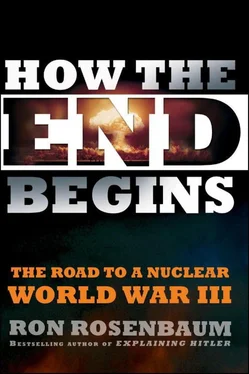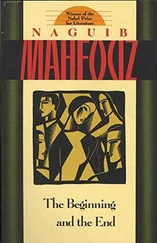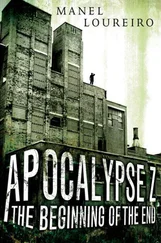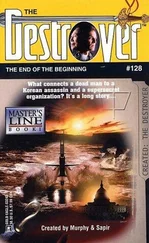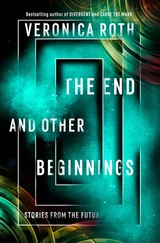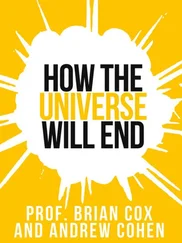It is disturbing to contemplate hypotheticals such as this, but when I hear them broached I often find myself surprised that they are rarely discussed beyond the narrow circle of nuclear war game initiates. Everyone has an opinion on global warming and detailed plans to respond to it. Few are willing to speak frankly about the continued threat of global incineration. Perhaps we only have room for one doomsday scenario, or perhaps the focus on global warming is a sublimation of the fear of global incineration. In any case, a kind of eclipse: Global warming, at least, offers paths to successful activism: science will solve the problem. Global incineration, on the other hand, seems a possibility beyond our rational control.
But one thing a U.S. president with dreams of Zero ought to do right now is what Ellsberg failed to do when he was on the inside, what he’s trying to do now: make the Number real, open it up, talk about the magnitude of casualties in a nuclear war. Look how powerful the “3 A.M.” ad was in almost derailing Obama’s primary campaign. The one that depicted a president awakened by an urgent early phone call. Everyone who saw it knows that “3 A.M.” was a kind of code for a nuclear terrorist crisis of some kind. We’ve all been watching 24, which makes nuclear terrorism more real for some, less for others, but marginalizes nuclear war. We’ve seen how powerfully a book and film like The Road by Cormac McCarthy can bring home the horror of a nuclear winter–like aftermath.
But we’ve never seen the mechanics of how a nuclear war begins. And a U.S. president could bring it to us. He could go a long way toward waking us from our holiday from history and changing a culture that normalizes genocidal deterrence threats just by giving all of us a demonstration of what it would be like to launch a nuclear strike. Televise his next black briefcase drill! Let the nation see the nuclear football up close! Challenge the Russians to do the same, simultaneously! Split the screen for all the world to see. Then take us inside the missile crewman underground launch control capsule and watch them go through a launch drill. Open it up! Punch in some code. Let’s leave nothing to the imagination. Bring the world in on the mechanics of the choice so they can see why it is worth focusing on the morals.
I’m not suggesting we download and share the SIOP (or OPLAN or CONPLAN as it’s now known). But on the other hand, why not? We should be aware of what’s been too long hidden or half-forgotten: the president’s power to destroy the world. We should be aware that when he’s pulling the trigger by punching in a code to the keyboard inside the black briefcase, it’s our hand that gave him the power to do it. We’re pulling the trigger, punching in the codes, turning the keys, filling out the checklist. Finishing the job. If the world can be rallied to the cause of earthquake or hurricane or tsunami victims in the moments after they happened, what about the prospective victims of nuclear war in the moment—speaking metaphorically—before it happens?
The last time I’d seen Ellsberg before our breakfast meeting—some three decades ago—he had been giving a talk at the old Catholic Worker storefront headquarters on the Lower East Side of Manhattan then still maintained as a refuge for the homeless by Dorothy Day. There among the tubercular coughers she ministered to, he spoke to a small group of attendees, still seeking forgiveness for his SIOP role. This time around he was just as driven to atone by shaking up the complacency of this second, even more dangerous, nuclear age.
Ellsberg told me he had looked me up because he recalled reading the story I had written after Major Hering’s case. He too had been inspired by the major, [137]he said—both by the nature of the question he asked, which went to Ellsberg’s specialty, nuclear command and control, and Hering’s willingness to sacrifice his career to ask it. And—this tells you everything you need to know about Ellsberg—he had saved for more than three decades the original newspaper clippings about the major’s case, which he had scanned and emailed to me. He also remembered the flaw in the “simultaneous two-key twist” fail-safe provision I had disclosed, the spoon-and-string maneuver. He too had been struck by how salient Major Hering’s question was, how many implications it entailed. After all, he had been at the top of the chain of command programming what would be vaporized when Major Hering, down at the bottom of his silo, would twist his key and send his missiles to their—to Ellsberg’s—target objectives.
One of Ellsberg’s specialties at RAND had been “ambiguities of warning.” Ellsberg knew that the major’s question disclosed the absence of any real, effectual checks and balances once the first ambiguous warning of nuclear war appeared on radar screens. He had done the math on the likelihood of launching an accidental nuclear war based on an ambiguous warning that turned out to be a false positive. And he knew that those ambiguities made it likely we would be in a de facto launch on warning posture, because we would have only fifteen minutes or less to react to radar and satellite signals before the detonations began.
Ellsberg also knew that the system of predelegation had never been thought through. [138]Early on in his work for McNamara he had been assigned to make a tour [139]of the Pacific admirals who had nuclear weapons under their command to determine whether they believed they had authority to launch nukes on their own if they felt cut off from the chain of command in wartime. He found out that they did. He also found out that they believed there was a letter from President Eisenhower that had granted it. When I met him in September 2009 he was bearing among other recently declassified documents a set of papers on predelegation that had been obtained by the National Security Archive at George Washington University and that revealed the existence of the rumored Eisenhower letter. [140]
Should Ellsberg have seized the opportunity to give the world a Major Hering moment when he was in the Pentagon? There are those who say no, that it all worked out for the best because we never had to use the weapons of genocide. But intending to do evil is the moral equivalent of doing it, some would say. Surely doing evil to noncombatants, on the scale of the Number, is. And the fact we had the “moral luck,” as the ethicists say, not to have to do what we convinced ourselves we might have to do for moral reasons, just raises another question: can there be a moral reason to commit genocide?
Some would argue we had no choice considering the rapacity and oppressiveness of our foe. We were confronting an evil empire (I won’t argue with that). We thought we had to threaten genocide to stem their expansion, or, eventually through sustained pressure and threat, to cause the dissolution of the regime that created the gulags in which Hitler-like numbers had died. How do you compare evils? I’m not sure there’s a good answer.
Ellsberg wants to return to us our capacity to be shocked and alarmed by the immoral persistent presence of genocidal nuclear weapons. We spent some time speaking of the relationship between the morality and the legality of nuclear weapons. The International Court of Justice in The Hague, the one known as the World Court, which puts war criminals on trial, issued an advisory opinion in 1996 that the entire system of nuclear deterrence was a war crime. [141]
For centuries military planners have made the moral high ground a strategic tool, given morality a grudging respect by recognizing the morality codified in international law, or in the just war moral ethical and theological principles that lie behind it. During the Cold War some theologians such as Paul Ramsey sought to defend the threat to use of nuclear weapons in some cases. [142]But the theological debates go back even further, to the time the flaming catapult became a siege weapon, which could not be guaranteed to strike only military defenders behind a beseiged city’s walls. Still, as the Conference of Catholic Bishops put it in 1983, “no previously conceived moral position escapes the fundamental confrontation posed by contemporary nuclear strategy.”
Читать дальше
